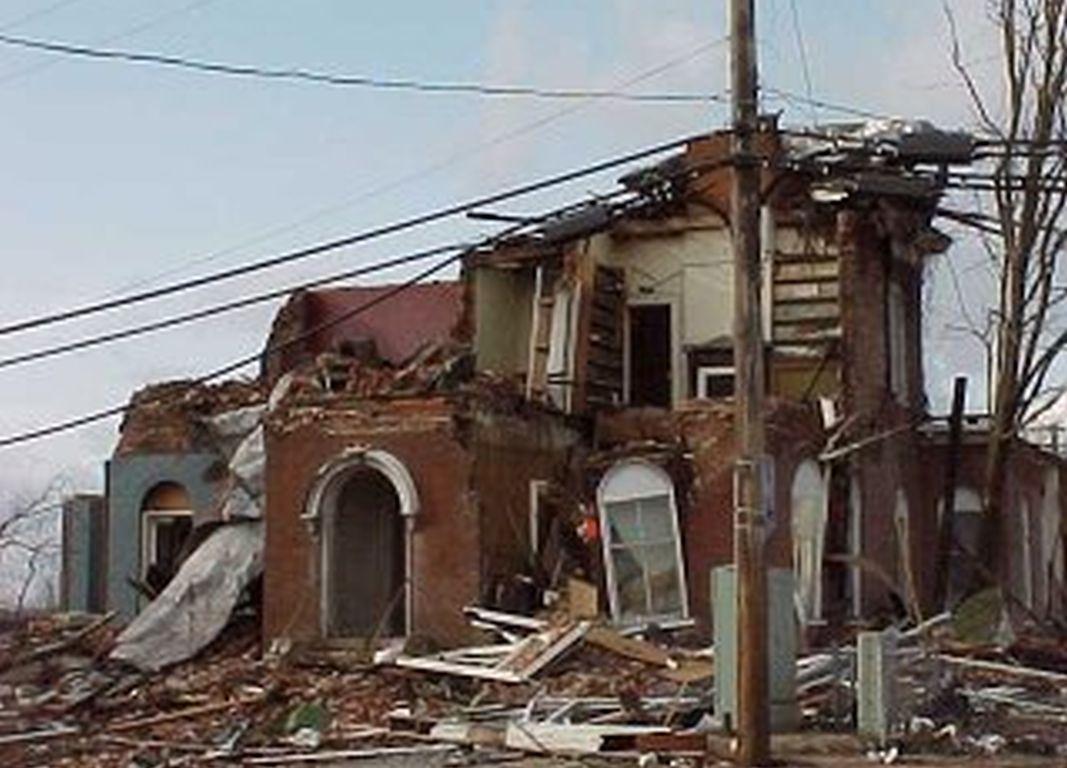CLARKSVILLE, Tenn. (CLARKSVILLENOW) – Lee Erwin, long-time Clarksville journalist who has worked in radio for 45 years, was at home on January 22, 1999, when he heard about a severe approaching storm.
“I lived on Marion Street near where the path of the tornado was. I got a call that morning from someone at the radio station and they told me about the storm,” Erwin said. “I turned on the TV. I was standing on my porch looking at the sky. I could hear something in the distance. Then the power went off.”
 Erwin said it was a Friday morning, his birthday just two days away.
Erwin said it was a Friday morning, his birthday just two days away.
It was early in the morning, after 4 a.m. and the eery noise sent Erwin into action. He jumped in his car, still in his sweats and slippers, and drove to the radio station, which was then located on Stateline Road away from the disaster.
On January 22, 1999, an F3 tornado struck downtown Clarksville just after 4 a.m. with winds estimated at 200 miles per hour.
The National Weather Service said the tornado ripped apart a 5-block area of downtown Clarksville and damaged at least 22 buildings at Austin Peay State University.
The Montgomery County Court House was in ruins and the Leaf-Chronicle newspaper office and several historic churches were seriously damaged. A total of 124 buildings were destroyed and 562 buildings were damaged, according to the City of Clarksville.
The NWS said the damage totaled $72.7 million.
“After the tornado had passed there was a dead silence,” Erwin said.
Erwin, then the station’s promotions manager, drove downtown and was met with the aftermath.
“There was a great deal of damage. The Leaf-Chronicle was hit and I remember the KY New Era printed the paper that day,” Erwin said. “There was so much debris everywhere.”
Erwin remembers there were searches through the rubble for survivors, but luckily there were no serious injuries. An APSU student sprained a limb while running to the basement.
While gawkers wanted to get close to see the damage, officials closed the city and downtown blocks where the tornado hit as they assessed the damage, Erwin said.
Erwin said debris was scattered, everything in disarray. Behind a funeral home downtown, empty showcase coffins littered the parking lot, he remembers.
At the intersection of University Avenue and College Street, a Toyota vehicle flipped on its top and had a random mailbox sticking out of it.
Twisted metal, tree limbs, and mounds of wreckage were scattered all over downtown.
Erwin took to the streets doing interviews.
“I walked around downtown doing call-ins,” he said. “I’d call into the radio station and talk live about what was going on downtown.”
As Erwin made his way through the littered streets talking live on the radio, he stepped into a big hole in the pavement full of water. Still wearing his slippers he paused as they soaked up the water.
“I said ‘Oh crap!’ on the radio,” he recalled laughing.
Erwin said Jan. 22, 1999 was an intense, long workday. The weeks that followed as clean up efforts started were too.
That Monday, Jan. 25, Lee Erwin’s birthday, he’d planned to take time off for himself.
Instead, he worked reporting developments to the community and giving out information about fundraisers for the tornado disaster relief.







































































































